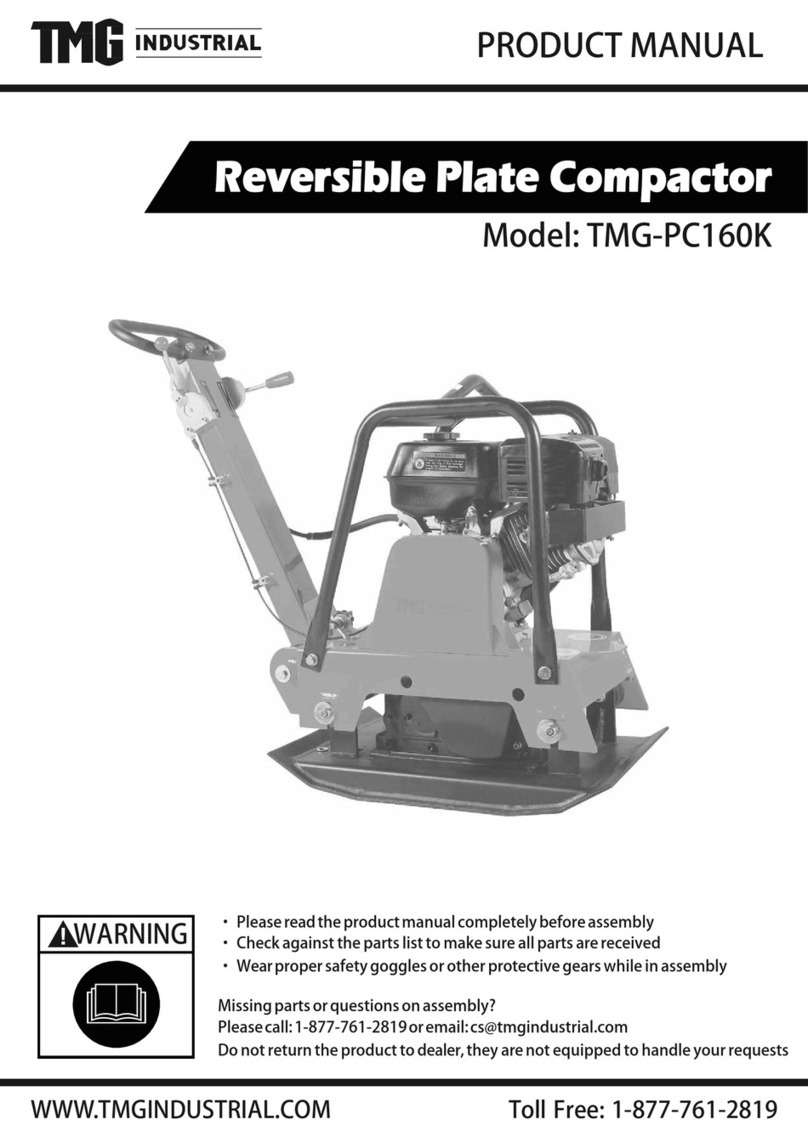
6
SAFETY PRECAUTIONS
Obey all hand signals, safety indications and signs.
When backing, always look to where the machine is to
be moved. Be alert of the position of bystanders. Should
someone enter the work area, stop the machine.
Maintain a safe distance from other machines or obsta-
cles to ensure required visibility conditions. Always
give way to loaded machines.
Maintain a clear vision of the surroundings of the travel
or work area at all times.
Keep cab windows clean and repaired.
When pulling loads or towing through a cable or chain,
do not start suddenly at full throttle. Take-up slack
carefully.
Avoid kinking or twisting chains or cables.
Carefully inspect cables or chains for flaws or problems
before proceeding.
Do not pull through a kinked chain or cable as the high
anomalous stresses existing in this condition may in-
duce failures in the kinked portion.
Always wear heavy gloves when handling chains or
cables.
Chains and cables should be securely anchored using
suitable hooks. Anchor points should be strong enou-
gh to withstand the expected load.
Keep anyone clear of anchor points and cables or
chains.
Do not pull or tow unless the operator’s compart-
ments of the machines involved are properly protec-
ted against possible backlash in case of cable or
chain failure or detachment.
Be alert of soft ground conditions close to newly con-
structed walls. The fill material and machine weight
may cause the wall to collapse under the machine.
In darkness, check area of operation carefully before
moving in with the machine. Use all lights provided. Do
not move into low visibility areas.
If the engine tends to slow down and stall for whatever
reason under load or at idle, immediately report this
problem to the maintenance managers for proper ac-
tion. Do not operate the machine until this condition is
corrected.
Regularly check all exhaust system components, as
exhaust fumes are toxic for the operator.
Operators must know the performance of the machine
they are driving.
When working on slopes or near sudden level drops in
the terrain, pay attention not to lose adherence and
avoid loose soft ground since overturn or loss of machi-
ne control could result.
If noise level is high and exceeds 90 dB(A) over 8 hours
at the operator’s ear, wear approved ear protection in
compliance with local regulations.
Do not operate the machine if you are extremely tired
or feel ill.
Be especially careful towards the end of the working
shift. Where removable counterweights are provided,
do not operate the machine if they have been removed.
When operating the machine, keep in mind height
limits of overhead doors, arches, overhead cables and
lines as well as width limits of corridors, roads and
narrow passages. Also, get to know load limits of the
ground and paving type of the ramps you are to work on.
Beware of fog, smoke or dust that obscure visibility.
Always inspect the working area to identify potential
risks such as: inclines, overhangs, trees, demolition
rubble, fires, ravines, steep slopes, rough terrain, dit-
ches, crowns, ridge trenches, diggings in traffic areas,
crowded parking lots, crowded service areas, fenced
zones. In such conditions, proceed with extreme care.
Whenever possible, avoid crossing over obstacles such
as very rough terrain, rocks, logs, steps, ditches, railroad
tracks. When obstructions must be crossed, do so with
extreme care and at a square angle, if possible. Slow
down. Ease up to the break-over point, pass the balance
point slowly and ease down the other side also using the
attachment, if necessary.
To overcome deep trenches or sinking ground, place the
machine perpendicular to the obstacle, drastically redu-
ce ground speed and start crossing using also the
attachment if necessary, only after assessing that ground
conditions allow the traverse safely and without risks.
The gradient you may attempt to overcome is limited by
factors such as ground conditions, load being handled,
machine type and speed, and visibility.
There is no substitute for good judgement and experien-
ce when working on slopes.
Avoid operating the attachment too close to an overhang
or high wall, either above or below the machine. Beware
of caving edges, falling objects and landslides. Remem-
ber that such hazards are likely to be concealed by
bushes, undergrowth and such.
Avoid faggots, bushes, logs and rocks. Never drive over
them, nor over any other surface irregularities that dis-
continue adherence or traction with the ground, especi-
ally near slopes or drop-offs.
Be alert to avoid changes in adherence conditions that
could cause loss of control.
Work with extreme care on ice or frozen ground and on
stepped slopes or near drop-offs.
Never use the machine as a work platform or scaffolding.
The machine must not be improperly used for works not
consistent with its features (such as pushing railway
cars, trucks or other machines). Always pay attention to
people within the machine operating range.
Ground speed should be adequate to ground condi-
tions.
- Nobody should be allowed to stand within the machine
operating range for any reason whatever. Never exceed
specified loading capacity. Incorrect fastening of slings
or chains may cause boom/arm failure or failure of the
lifting means with consequent bodily injuries and even
death.
Always ensure that slings and chains used for lifting are
adequate to the load and in good condition.
All features capacities are referred to the machine on
a level surface and should be disregarded when wor-
king on a slope.
Avoid travelling across slopes. Proceed from uphill
downhill and vice-versa.




































